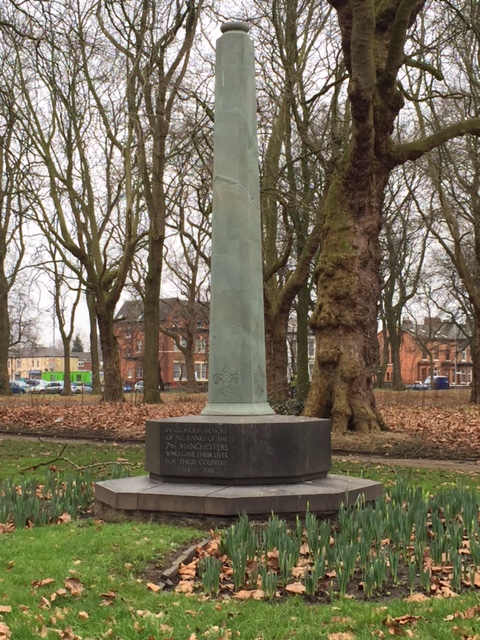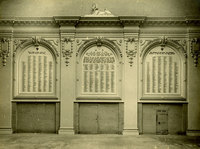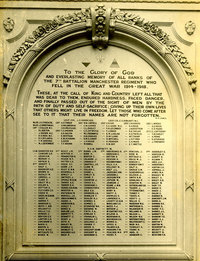By Michael Whitworth

Standing in a corner of Whitworth Park, adjacent to the newly-refurbished Whitworth Art Gallery, lies a seldom visited World War One memorial, commemorating those who lost their lives in the 7th Battalion of the Manchester Regiment. The majority of this territorial battalion’s recruits originated from the area of Manchester around the University and formed part of the renowned 42nd East Lancashire Division that distinguished itself in battles at Gallipoli, Egypt and on the Western front. Gerald B. Hurst, lecturer of law and special lecturer in colonial history, was one of many University men to serve with the 7th Manchester Regiment. He penned a battalion history covering the period 1914-early 1916 when it was serving Egypt and Gallipoli.


The original war memorial that preceded the column situated in Whitworth Park was erected inside the Drill Hall and battalion headquarters which were located in the building now known as the McDougall Centre on Burlington Street. In 1933, the McDougall Centre was put up for sale following government defence spending cuts and the decision was made that a new memorial should be constructed. A design competition for the new memorial was subsequently held by Professor A.C Dickie, Chair of Architecture at the University of Manchester, and was won by Norman Wragge. His design was a tapered column made of black granite that stood on a base of white stone, with a floriated ‘fleur de Lys’ (the badge of the 7th Battalion) engraved on each of its four sides. The memorial was approved for construction by the Whitworth Trustees and Manchester City Council.

The memorial was unveiled by General Sir Reginald Wingate in September 1933 in front of a large crowd of veterans, present battalion members and relatives of deceased members of the battalion paying their respects.
If passing through Whitworth Park, do take a moment to admire this simple gesture of remembrance for the local Infantry Battalion and those who lost their lives in World War One.